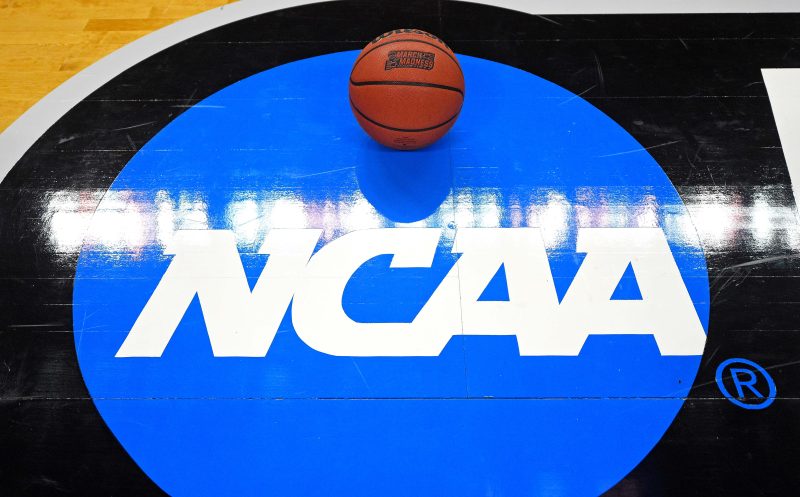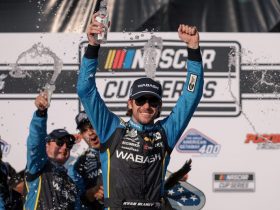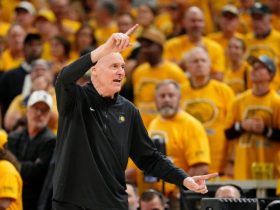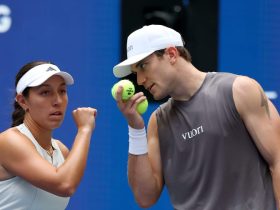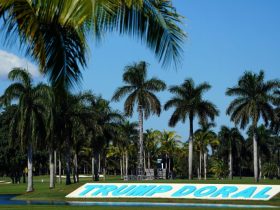The NCAA, the Power Five conferences and lawyers for the plaintiffs in three antitrust cases concerning the compensation of college athletes on Friday filed documents asking a federal judge in California to provide preliminary approval of a proposed settlement that would include a nearly $2.8 billion damages pool for current and former athletes and dramatically alter other fundamental aspects of how the association’s top level of competition is governed.
Division I schools would be able to start paying athletes directly for use of their name, image and likeness (NIL), subject to a per-school cap that would increase over time. NCAA leaders would seek to engineer rules changes eliminating longstanding, sport-by-sport scholarship limits and replacing them with a new set of roster-size limits. And while athletes would continue to have the ability to make NIL deals with entities other than their schools, the NCAA says it would aim to institute rules designed to give the association greater enforcement oversight of those arrangements.
The NCAA would fund the damages pool over a 10-year period, with more than half of the money coming from reductions in the NCAA’s distributions to all Division I schools and conferences. Nearly 400,000 athletes would be eligible for some type of payment for damages reaching as far back as 2016, with football and men’s basketball players set to receive the largest amounts. But the plaintiffs’ lawyers said there is an instance of an athlete in sport other than football, men’s basketball or women’s basketball who is estimated to be eligible for a claim of more than $1.85 million.
Multiple people have told USA TODAY Sports they expect that the proposed arrangement will have a future impact of at least $20 million a year on the budgets of athletics departments that will pay their athletes the maximum combined total that would be allowed under the cap.
Altogether, the plaintiffs’ lawyers say, the damages and the future payments from schools for NIL will provide athletes with a combined total of more than $20 billion over the 10 years that would be covered by the proposed agreement.
This makes the deal “one of the largest antitrust class-action settlements in history,” the plaintiffs’ lawyers said in their summary of the proposal.
In their filing with the court, they wrote that this is a ‘revolutionary settlement agreement … that will have a profoundly positive impact on the tens of thousands of college athletes at the hundreds of colleges and universities that play Division I sports each year. … This is nothing short of a seismic change to college sports following more than four years of hard-fought victories in’ the cases.
The proposed nearly $2.8 billion settlement pool would include money that would go to the plaintiffs’ lawyers for their fees and costs. According to documents filed Friday, they will ask the judge to approve up to $495.2 million in fees, just under 18% of the total, plus ‘out-of-pocket expenses.’ The plaintiffs’ legal team is led by Steve Berman of Seattle-based Hagens Berman Sobol Shapiro LLP, and Jeff Kessler of New York-based Winston & Strawn LLP. This amount, like others in the case, would ne paid out over 10 years, the documents said.
If U.S. District Judge Claudia Wilken accepts the arrangements as presented, this new model of college sports could take effect as early as the 2025-2026 school year, and current and former athletes could begin receiving checks from the damages pool in fall 2025.
But as part of the approval process, athletes — presumably represented by other attorneys — will have the opportunity to object. The process likely will take months to complete. And it could take much longer. If the settlement is approved, in the future, incoming college athletes will receive notice of the settlement terms and have the right to file written objections, Friday’s filings said.
Here is a look at the proposed settlement, according to summary information provided by the plaintiffs’ lawyers, the NCAA and the documents:
The NCAA damages payout, looking backward
This money seeks to compensate former and current athletes for varying impacts of NCAA rules that have limited athlete compensation. But the three lawsuits were filed at different times and cover different issues. That means money would be paid out from a variety of pools and amounts will depend on a variety of factors, including the sport an athlete played, the conference in which they played and the number of years they played that are covered by the proposed settlement.
For example, there would be a pool based on television broadcast money that allegedly would have gone to Power Five athletes if the NCAA’s limits on pay had not existed. That pool likely would cover athletes in football, men’s basketball and women’s basketball and would cover athletes from as far back as 2016, because the applicable lawsuit was filed in 2020. The date is four years prior to when the suit was initially filed because that is the reach-back period allowed under antitrust law.
According to the plaintiffs’ lawyers, these payments for football and men’s basketball players would average about $91,000 and range from $15,000 to $280,000. Because there are fewer men’s basketball players than there are football players, men’s basketball players on average will receive more money, according to the plaintiffs’ lawyers. For women’s basketball players, the average would be $23,000 and would range from $3,000 to $52,000.
Another pool would be based on the value of NIL opportunities that athletes now have, but that had been prohibited by the NCAA until July 1, 2021. That pool would cover all current and former athletes who competed on any Division I team prior to July 1, 2021 and received NIL pay after that date. That pool is the source of the single estimated claim of more than $1.85 million.
Damages amounts also would be available based on use of athletes’ NIL in videogames; pay for play opportunities the allegedly lost because of NCAA rules; and academic achievement awards that athletes now can get, but previously could not. The academic-achievement damages pool is likely to cover all current and former athletes who competed on a Division I team on, or after, April 1, 2019, because the applicable suit was filed in April 2023.
It’s likely that some athletes would be eligible for payments from multiple pools.
The damages payout, looking ahead (maybe)
The various sport-by-sport damages amounts connected to TV broadcast money are driven by plaintiffs’ expert reports and could be important as schools contemplate how to allocate the NIL money that the settlement would allow them to pay athletes – particularly in the context of Title IX, the federal gender-equity law.
The reports came from Ed Desser, a media consultant, and Dan Rascher, a University of San Francisco sport management professor who also has been an expert witness on the economics of major-college athletics for plaintiffs in other antitrust cases against the NCAA. And they were referenced in a filing by the NCAA in April 2023 that was part of its effort to oppose the case.
According to that filing:
►Desser concluded that value of the use of athletes’ NIL in college sports TV contracts is 10% of the total broadcast revenue for each conference.
►Desser also determined that of the dollar amount connected to that percentage in a multi-sport media deal, 75% can be attributed to football, 15% to men’s basketball and 5% to women’s basketball, 5% to Olympic sports.
This could inform how schools seek to budget their NIL pay to athletes. However, because the money would be coming the from schools, rather than outside entities, Title IX advocates will be watching these allocations closely.
Payments to college athletes, looking ahead
Schools would have latitude about how much to pay an individual athlete, but there would be a limit on the total amount they could initially pay to their athletes. Initially, that would be an amount equal to 22% of the average total of eight types of annual operating revenues that Power Five conference schools annually report to the NCAA. Among those revenue sources are ticket sales, appearance guarantees, media rights and sponsorship fees, revenue shares from conferences and the NCAA, and money from bowl games.
The amount of the cap would increase annually and an official for the NCAA said the percentage would be subject to review at least every three years.
Rascher estimates that the maximum amount per school would start at more than $20 million for the 2025-26 school year and grow to $32.9 million in 2034-35, Friday’s filings said.
Payments to athletes from other parties, looking ahead
There would be an attempt to bring this under some enforceable regulation, the official for the NCAA said. Athletes would have to report payments of more than $600 to a clearinghouse that would be established. And their deals would be subject to review, with the goal being the prevention of pay for play and deals that pay amounts above market value.
Athletes who have questions about the permissibility of their agreements would be able to seek advisory opinion from an enforcement group. If the enforcement group sought to sanction an athlete because a deal, the athlete would have the ability to bring the matter to an arbitrator.
What does all of this have to do with roster sizes and scholarship limits?
The plaintiffs’ lawyers said in their summary that the scholarship limits “restricted benefits that could be provided to athletes.” Using roster limits instead, “puts the NCAA in line with most professional sports leagues, which have roster limits.”
The official for the NCAA said that because the association has faced — and continues to face — many antitrust lawsuits, it wants this settlement to at least head off a future attempt to challenge its scholarship limits. In addition, the elimination of scholarship limits, at least theoretically, would provide schools the opportunity to give more athletic scholarship money to a greater number of athletes.
What happens now?
A preliminary-approval hearing has been tentatively set for Sept. 5, but it could be held sooner.
Over the past 15 years of antitust litigation involving the NCAA, there have been other damages settlements that Wilken has approved with only minor adjustments. However, in one of those cases, one former college football player and his attorney pursued an objection to the 9th U.S. Circuit Court of Appeals. A three-judge panel unanimously rejected their arguments, but the dispute resulted in it taking a little more than two years for that settlement to go from where the proposed deal in these cases now stands.
At present, there is already another ongoing antitrust suit against the NCAA and the power conferences regarding athlete compensation that has the potential to be a source of objections to the proposed settlement. That case is proceeding in a U.S. District Court in Colorado.
On Tuesday, lawyers for the plaintiffs in that case filed an amended version of their lawsuit that added three athlete plaintiffs, increasing the total to five, and made some new allegations that criticize the proposed settlement in California.
The new version of the suit in Colorado alleges that “even if that settlement is approved, it would simply usher is a new, artificially low cap that is far below the revenue sharing that a competitive market would yield. While it is an admission that amateurism is not needed, it also simply substitutes one illegal price fix for another.”
Houston Christian University, a member of the Football Championship Subdivision, had attempted to intervene in the case and had asked Wilken to declare the proposed agreement to be ‘void and of no effect.’ On Wednesday, however, she denied that request and blocked Houston Christian (HCU) from objecting to the proposed settlement.
In its motion to intervene, HCU alleged: “The proposed settlement will adversely affect HCU. None of the parties, particularly the Defendants, has consulted with — much less taken any step to protect — HCU’s interests. Neither HCU nor its conference were parties to this litigation, had a seat at the negotiating table, or had any input into any resolution of this matter, including the proposed settlement.”
Following Wilken’s ruling on Wednesday, James Bryant, an attorney for HCU said: ‘I respect the judge’s decision. She has worked very hard on this case. But I disagree with (the ruling). And I suspect there will be an appeal or further litigation in another forum.’
The NCAA’s ongoing legal liability
While the proposed settlement would solve one set of problems for the NCAA, others remain beyond the case in Colorado. The proposed settlement does nothing for the association regarding the question of whether college athletes are employees of their schools.
A U.S. House committee has approved a bill that would prevent college athletes from being considered employees of a school, conference or governing organization like the NCAA. But it is awaiting a floor vote.
Meanwhile:
Two weeks ago, a federal appeals court refused to rule out the possibility of college athletes being considered employees of their schools under minimum-wage law, as the NCAA had requested, but a three-judge panel sent the case back to a lower court for further consideration of the issue.
In February, a National Labor Relations Board regional director ordered a union election for Dartmouth College men’s basketball players, although the school is pursuing an full NLRB review of the case and could pursue the matter in court.
The NLRB’s Los Angeles office issued a complaint against the NCAA, the Pac-12 Conference and the University of Southern California, alleging they have unlawfully misclassified college athletes as “student-athletes” rather than employees. That case is pending with an administrative law judge.
In addition to all of that. A tennis player has filed suit, seeking an end to the association’s limits on prize money that athletes can earn in outside competitions. And groups of former college basketball players are now pursuing damages connected to the NCAA’s use of their NIL in highlight packages.

